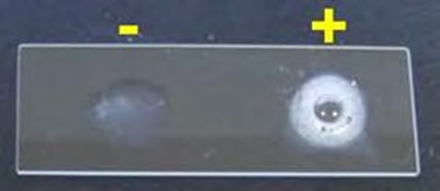7.5: Enzimas Respireatorias
- Page ID
- 51472
\( \newcommand{\vecs}[1]{\overset { \scriptstyle \rightharpoonup} {\mathbf{#1}} } \)
\( \newcommand{\vecd}[1]{\overset{-\!-\!\rightharpoonup}{\vphantom{a}\smash {#1}}} \)
\( \newcommand{\id}{\mathrm{id}}\) \( \newcommand{\Span}{\mathrm{span}}\)
( \newcommand{\kernel}{\mathrm{null}\,}\) \( \newcommand{\range}{\mathrm{range}\,}\)
\( \newcommand{\RealPart}{\mathrm{Re}}\) \( \newcommand{\ImaginaryPart}{\mathrm{Im}}\)
\( \newcommand{\Argument}{\mathrm{Arg}}\) \( \newcommand{\norm}[1]{\| #1 \|}\)
\( \newcommand{\inner}[2]{\langle #1, #2 \rangle}\)
\( \newcommand{\Span}{\mathrm{span}}\)
\( \newcommand{\id}{\mathrm{id}}\)
\( \newcommand{\Span}{\mathrm{span}}\)
\( \newcommand{\kernel}{\mathrm{null}\,}\)
\( \newcommand{\range}{\mathrm{range}\,}\)
\( \newcommand{\RealPart}{\mathrm{Re}}\)
\( \newcommand{\ImaginaryPart}{\mathrm{Im}}\)
\( \newcommand{\Argument}{\mathrm{Arg}}\)
\( \newcommand{\norm}[1]{\| #1 \|}\)
\( \newcommand{\inner}[2]{\langle #1, #2 \rangle}\)
\( \newcommand{\Span}{\mathrm{span}}\) \( \newcommand{\AA}{\unicode[.8,0]{x212B}}\)
\( \newcommand{\vectorA}[1]{\vec{#1}} % arrow\)
\( \newcommand{\vectorAt}[1]{\vec{\text{#1}}} % arrow\)
\( \newcommand{\vectorB}[1]{\overset { \scriptstyle \rightharpoonup} {\mathbf{#1}} } \)
\( \newcommand{\vectorC}[1]{\textbf{#1}} \)
\( \newcommand{\vectorD}[1]{\overrightarrow{#1}} \)
\( \newcommand{\vectorDt}[1]{\overrightarrow{\text{#1}}} \)
\( \newcommand{\vectE}[1]{\overset{-\!-\!\rightharpoonup}{\vphantom{a}\smash{\mathbf {#1}}}} \)
\( \newcommand{\vecs}[1]{\overset { \scriptstyle \rightharpoonup} {\mathbf{#1}} } \)
\( \newcommand{\vecd}[1]{\overset{-\!-\!\rightharpoonup}{\vphantom{a}\smash {#1}}} \)
\(\newcommand{\avec}{\mathbf a}\) \(\newcommand{\bvec}{\mathbf b}\) \(\newcommand{\cvec}{\mathbf c}\) \(\newcommand{\dvec}{\mathbf d}\) \(\newcommand{\dtil}{\widetilde{\mathbf d}}\) \(\newcommand{\evec}{\mathbf e}\) \(\newcommand{\fvec}{\mathbf f}\) \(\newcommand{\nvec}{\mathbf n}\) \(\newcommand{\pvec}{\mathbf p}\) \(\newcommand{\qvec}{\mathbf q}\) \(\newcommand{\svec}{\mathbf s}\) \(\newcommand{\tvec}{\mathbf t}\) \(\newcommand{\uvec}{\mathbf u}\) \(\newcommand{\vvec}{\mathbf v}\) \(\newcommand{\wvec}{\mathbf w}\) \(\newcommand{\xvec}{\mathbf x}\) \(\newcommand{\yvec}{\mathbf y}\) \(\newcommand{\zvec}{\mathbf z}\) \(\newcommand{\rvec}{\mathbf r}\) \(\newcommand{\mvec}{\mathbf m}\) \(\newcommand{\zerovec}{\mathbf 0}\) \(\newcommand{\onevec}{\mathbf 1}\) \(\newcommand{\real}{\mathbb R}\) \(\newcommand{\twovec}[2]{\left[\begin{array}{r}#1 \\ #2 \end{array}\right]}\) \(\newcommand{\ctwovec}[2]{\left[\begin{array}{c}#1 \\ #2 \end{array}\right]}\) \(\newcommand{\threevec}[3]{\left[\begin{array}{r}#1 \\ #2 \\ #3 \end{array}\right]}\) \(\newcommand{\cthreevec}[3]{\left[\begin{array}{c}#1 \\ #2 \\ #3 \end{array}\right]}\) \(\newcommand{\fourvec}[4]{\left[\begin{array}{r}#1 \\ #2 \\ #3 \\ #4 \end{array}\right]}\) \(\newcommand{\cfourvec}[4]{\left[\begin{array}{c}#1 \\ #2 \\ #3 \\ #4 \end{array}\right]}\) \(\newcommand{\fivevec}[5]{\left[\begin{array}{r}#1 \\ #2 \\ #3 \\ #4 \\ #5 \\ \end{array}\right]}\) \(\newcommand{\cfivevec}[5]{\left[\begin{array}{c}#1 \\ #2 \\ #3 \\ #4 \\ #5 \\ \end{array}\right]}\) \(\newcommand{\mattwo}[4]{\left[\begin{array}{rr}#1 \amp #2 \\ #3 \amp #4 \\ \end{array}\right]}\) \(\newcommand{\laspan}[1]{\text{Span}\{#1\}}\) \(\newcommand{\bcal}{\cal B}\) \(\newcommand{\ccal}{\cal C}\) \(\newcommand{\scal}{\cal S}\) \(\newcommand{\wcal}{\cal W}\) \(\newcommand{\ecal}{\cal E}\) \(\newcommand{\coords}[2]{\left\{#1\right\}_{#2}}\) \(\newcommand{\gray}[1]{\color{gray}{#1}}\) \(\newcommand{\lgray}[1]{\color{lightgray}{#1}}\) \(\newcommand{\rank}{\operatorname{rank}}\) \(\newcommand{\row}{\text{Row}}\) \(\newcommand{\col}{\text{Col}}\) \(\renewcommand{\row}{\text{Row}}\) \(\newcommand{\nul}{\text{Nul}}\) \(\newcommand{\var}{\text{Var}}\) \(\newcommand{\corr}{\text{corr}}\) \(\newcommand{\len}[1]{\left|#1\right|}\) \(\newcommand{\bbar}{\overline{\bvec}}\) \(\newcommand{\bhat}{\widehat{\bvec}}\) \(\newcommand{\bperp}{\bvec^\perp}\) \(\newcommand{\xhat}{\widehat{\xvec}}\) \(\newcommand{\vhat}{\widehat{\vvec}}\) \(\newcommand{\uhat}{\widehat{\uvec}}\) \(\newcommand{\what}{\widehat{\wvec}}\) \(\newcommand{\Sighat}{\widehat{\Sigma}}\) \(\newcommand{\lt}{<}\) \(\newcommand{\gt}{>}\) \(\newcommand{\amp}{&}\) \(\definecolor{fillinmathshade}{gray}{0.9}\)Prueba de oxidasa
Fundamento: Los citocromos son hemoproteínas que contienen hierro y que actúan como último eslabón en la cadena de respiración aeróbica transfiriendo electrones al oxígeno con la formación de agua. El sistema de citocromos lo poseen los organismos aeróbicos facultativos por lo que la prueba de la oxidasa es importante en la identificación de aquellos organismos en los que falta la enzima, o son anaerobios estrictos.
La prueba de la citocromo oxidasa utiliza ciertos colorantes, tales como, el dimetil p-fenilen- diamina, que sustituyen al oxígeno como aceptor de electrones artificial. En el estado reducido el colorante es incoloro, sin embargo, en presencia de citocromo oxidasa y de oxígeno atmosférico el colorante es oxidado formando un compuesto azul (indofenol).
Procedimiento: Colocar un disco de oxidasa (embebido en dimetil p-fenilendiamina, adquirido comercialmente) en 0,2 ml de agua destilada en un tubo y suspender la colonia bacteriana.
Interpretación: Un color azul intenso dentro de los 30 segundos indica reacción positiva y evidencia de la presencia de la enzima citocromo oxidasa.
\[ \begin{matrix}
\text{2 Citocromo C reducido} & + & 1/2 \; O_{2} & \xrightarrow[]{Citocromo oxidasa} & \text{2 Citocromo C oxidado} & + & H_{2}O \\
\text{2 Citocromo C reducido} & + & 1/2 \; O_{2} & \xrightarrow[]{Oxidación} & \text{Compuesto coloreado} & & \\
\end{matrix} \]
Prueba de catalasa
Fundamento: Todas las bacterias tienen enzimas capaces de reaccionar con el oxígeno, la variedad de las mismas determinan la relación fisiológica de los organismos con dicho compuesto. La oxidación de las flavoproteínas por el oxígeno da como resultado peróxido de hidrógeno y la acumulación de radicales libres tóxicos de O - (superóxidos). La acumulación de O - es prevenida por la enzima superóxido dismutasa y la del peróxido de hidrógeno por la enzima catalasa.
\[ \begin{matrix}
FPH_{2} & + & O_{2} & \xrightarrow[]{} & FP & + & H_{2}O_{2}\\
2 \; H_{2}O_{2} & & & \xrightarrow[]{catalasa} & H_{2}O & + & O_{2} \\
\end{matrix} \]
Los microorganismos aerobios y aerobios facultativos poseen las dos enzimas; los aerotolerantes poseen la superoxidodismutasa, mientras que los anaerobios estrictos no tienen ninguna de estas enzimas.
Procedimiento: Tomar con cuidado una colonia con el ansa de siembra (evitar tomar agar). Los cultivos deben ser frescos, de no más de 24 h, tampoco se pueden utilizar cultivos a partir de medios que tengan adicionada sangre porque la catalasa de los glóbulos rojos produce falsos positivos. Colocar la colonia directamente sobre un portaobjetos sin añadir agua y por último, colocar sobre la colonia una gota de agua oxigenada pura o al 30 % y observar si se forman burbujas.

Interpretación: La producción de burbujas de gas indica que el microorganismo es catalasa (+). Si la producción de gas es después de los 30 s se considera negativo.


